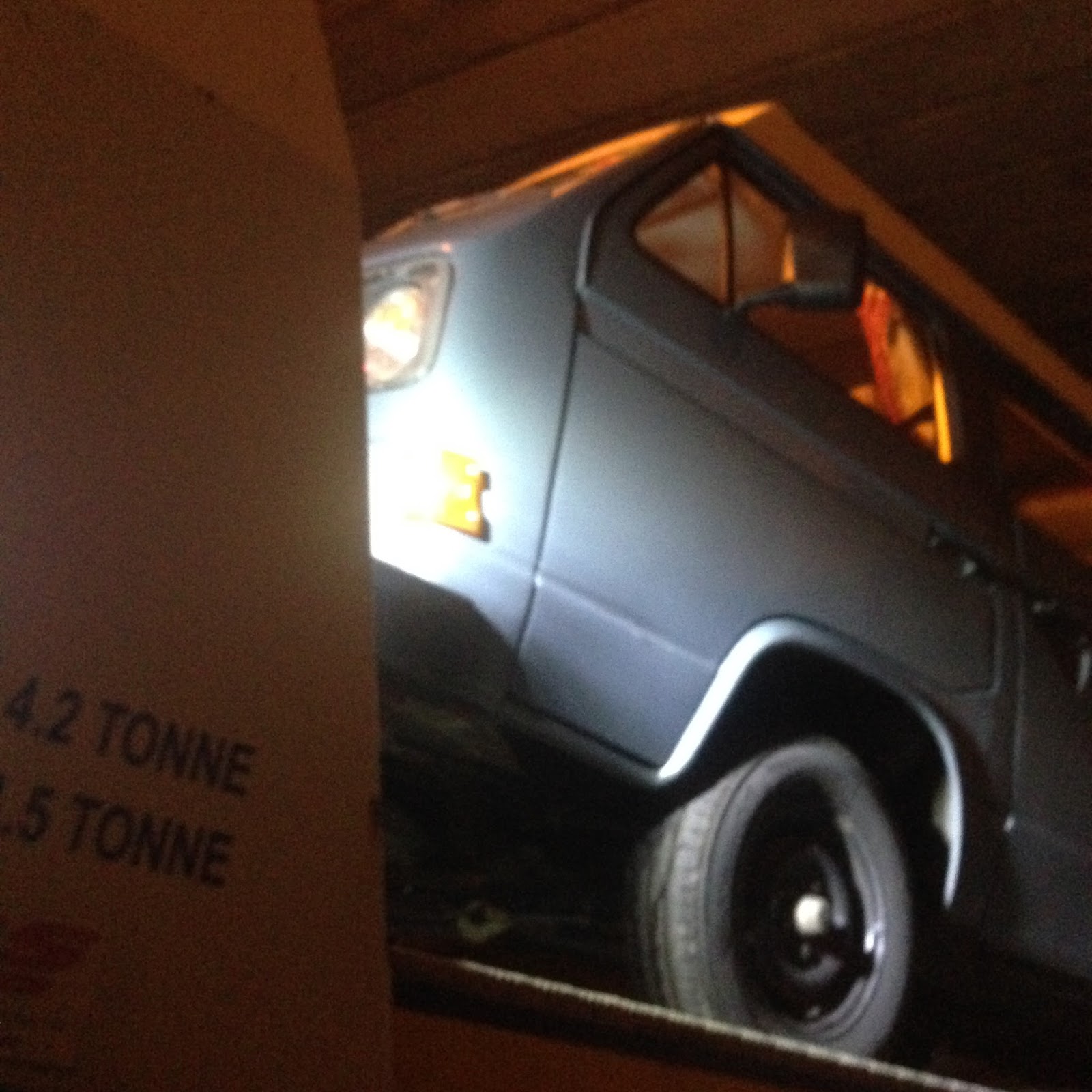"How's the van running ed?" they ask.
"Yea, pretty well! Touch wood" I say.
Touch wood.
Ahh. The phrase that means everything will be ok. It almost guarentees that the engine will most certainly NOT die whilst you are travelling at 55 mph on a busy dual carriageway.
Guaranteed.
No, no wait. It really, really doesn't. It actually means nothing. The engine is all the way out back chugging along. It's made of metal. It can't hear you.
Doris ground to a halt on the A5 just outside of Shrewsbury. At the time we did not know exactly what was wrong. She lost power. 55 mph become 40, my foot to the floor achieving nothing more. 40 mph became 25, followed by a drop down the gears, right foot remaining planted. I pulled over as far as I dared and turned her off with smoke pluming from behind.
Fire extingusher in hand I jumped out fearing the worst. I pulled the little engine access flap open, Nothing. Lucky. At least she wasn't about to go up in flames.
Recovery took what seemed like forever to find us. Unable to achieve anything by the roadside, we had to start Doris up once more, and limp her for 3 miles to the next motorway exit. She was not happy. Once safely out of the way, the RAC set about once again achieving nothing and finally we had a recovery truck on the way. We waited once more. Almost 5 hours later it turned up.
Come take it.
And that was that. Home and tired, with an almost dead campervan full of our stuff, looking sorry for itself. Breaking down at the very start of summer. Bummer.
I considered our options and figured the first job would be diagnosis.
Stick with me on this one. It's a bit technical and none of it would have meant much to me 3 years ago.
Doris's engine has 4 pistons that go up and down, real fast. Little valves open and close at just the right time, letting air and petrol into the engine and exhaust gasses out of the engine. Each time a piston travels upwards it either squashes air and petrol together, making an explosive mixture that the spark plug ignites, or it pushes the used exhaust gasses out.
The squashing of petrol and air is called "compression". The better the compression, the more power your engine can have.
I tested how well Doris was squashing her air and petrol mixture using a compression tester.
The result? One of the four pistons was doing nothing. No compression. No Power.
Doris, meet Engine Crane.
Seeing as her engine was now doing an impression of a boat anchor and couldn't be made any worse, myself and my brother took it out, and took it to bits. As you do.
There's nothing like getting stuck in, is there?
Wires disconnected, fuel lines plugged and just 8 bolts undone. VW made things simple for a reason. I'll spare you the bit about the engine crane breaking and us swearing rather loudly, man handling the engine out using wooden blocks and a trolly jack. Yea, I'll spare you that story.
We got it out. Eventually.
The tally of bolts briefly remained at 8 as we set about getting to the engines innards. Without the use of any workshop manuals the process remained kind of instinctive. Things needed to be undone where possible, and cut off carefully where not.
With most of the cooling system sprawled across the tarmac we began to find some evidence of what was wrong.
The oil cooler wasn't pretty. Had the engine overheated because of this? Possibly.
More nuts and bolts later and something catches my eye. This spring is for one of the valves on the "dead" piston. It shouldn't be sticking out that far. It should be level with the other one.
Off with her cylinder head. 8 more nuts and bolts, which incidentally were already slightly loose. Not cool. Dan, along with more engine know how than myself brought out the only special tool we had to use. A valve spring compressor.
And bingo. This may not look like much but to an engine it is terminal. The valve seat, the seal that allows the engine to do its petrol squeezing etc etc, is gone. The cylinder head is also cracked. Consider this portion of the engine toast. It took a piston out too.
That's an entire campervan rendered dead and out of action because of a piece about the size of a £2 coin.
What lead to the failure? Heat. Caused by the cylinder head loosening and allowing extra air in, meaning the engine was burning petrol hotter than it should have. The blocked oil cooler was part of the story. This may have lead to the cylinder head heating, cracking and loosening in the first place.
Enough science. The engine was in pieces. Toasted. Summer was upon us, which meant we were facing the sun filled months with no adventure mobile.
"Volkswagen, turning owners into mechanics since 1937"
Now that is a phrase that means something. No wood touching required.
With only half an engine you can't travel far. I spent a few weeks debating what the next move would be. Another used engine? Risky. A new reconditioned engine? Expensive. Replace all damaged and worn out parts on Doris's broken engine?
I asked our good friend Andrew, who runs a T25 specialist workshop called the "Campershack" in Grantham (check them out) and he helped me decide that a DIY rebuild was within my grasp. After all, we'd already taken the engine apart. Assembling it back together is just the same job in reverse, right?
To be continued...























